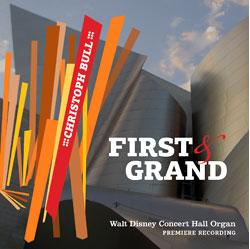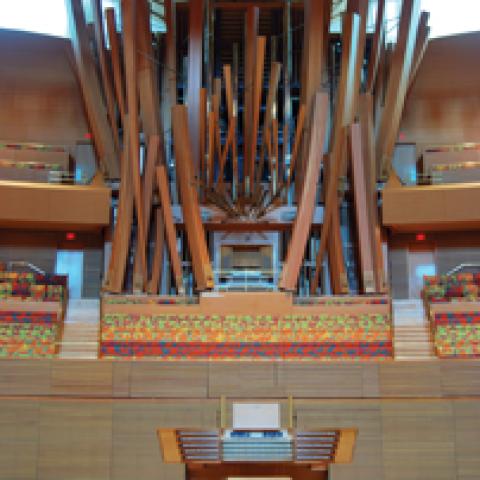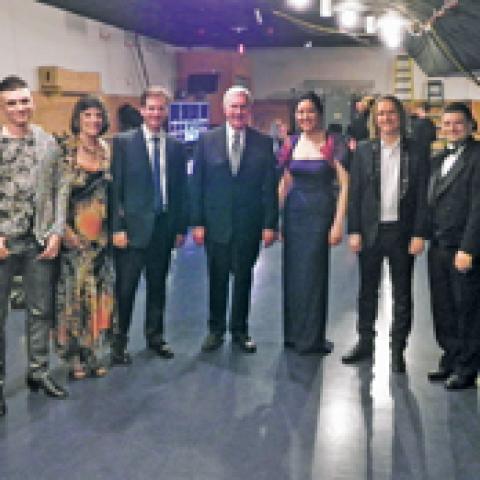
Christoph Bull has released a first limited edition of his Walt Disney Concert Hall organ premiere recording on the independent artists site CD Baby.
The album, which includes eleven tracks and a 24-page booklet, is entitled First & Grand after the hall’s location on Grand Avenue and First Street in downtown Los Angeles. The organ is a collaboration of Glatter-Götz and Rosales organbuilders, and the façade of the instrument was co-designed by the hall’s architect Frank Gehry.
Most of the tracks were recorded with a pair of vintage Neumann microphones placed to capture the sound of both the organ and the hall. The recording engineers were Grammy-award-winners Allen Sides and Fred Vogler as well as Alejandro Leda. The album was mastered by Grammy-winner Bernie Grundman. The repertoire includes works by Bach, Bruhns, and Barber as well as original compositions, improvisations, and arrangements.
Christoph Bull is university organist and organ professor at UCLA and a member of the Los Angeles AGO chapter. For more information:
www.christophbull.com.





